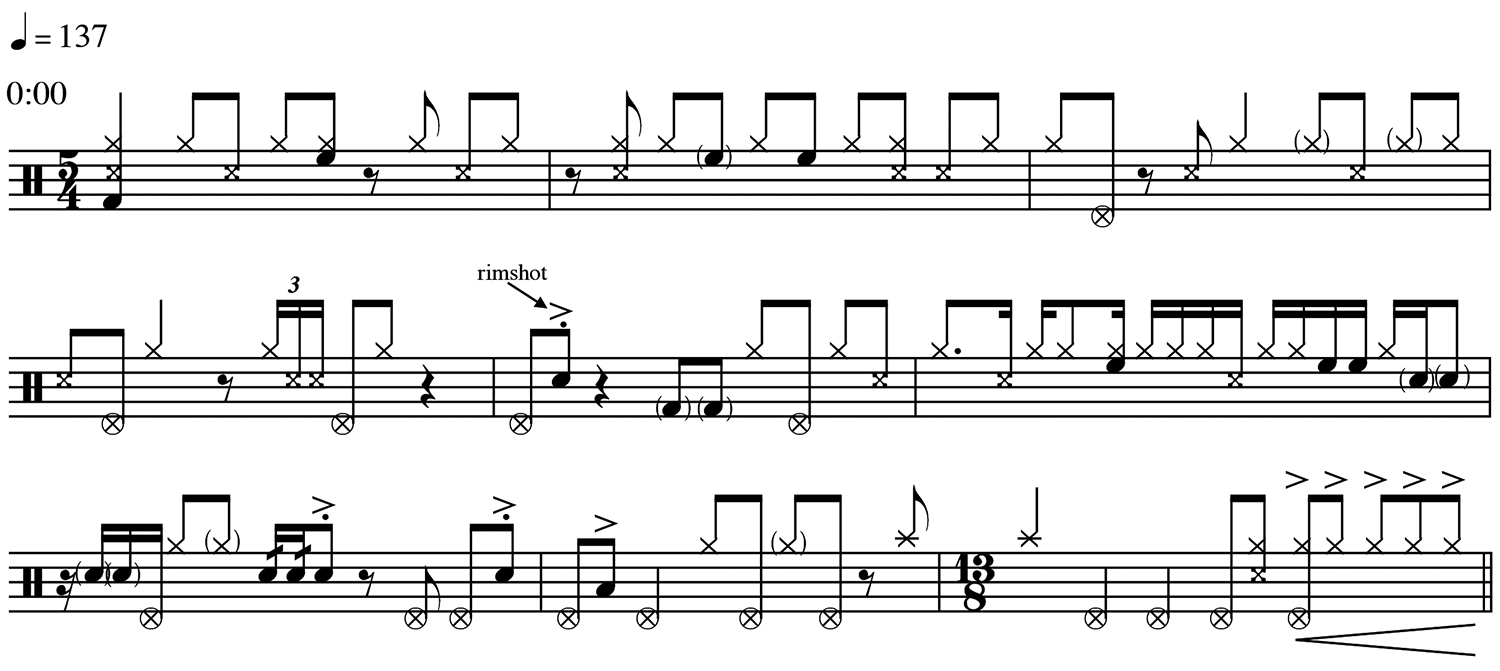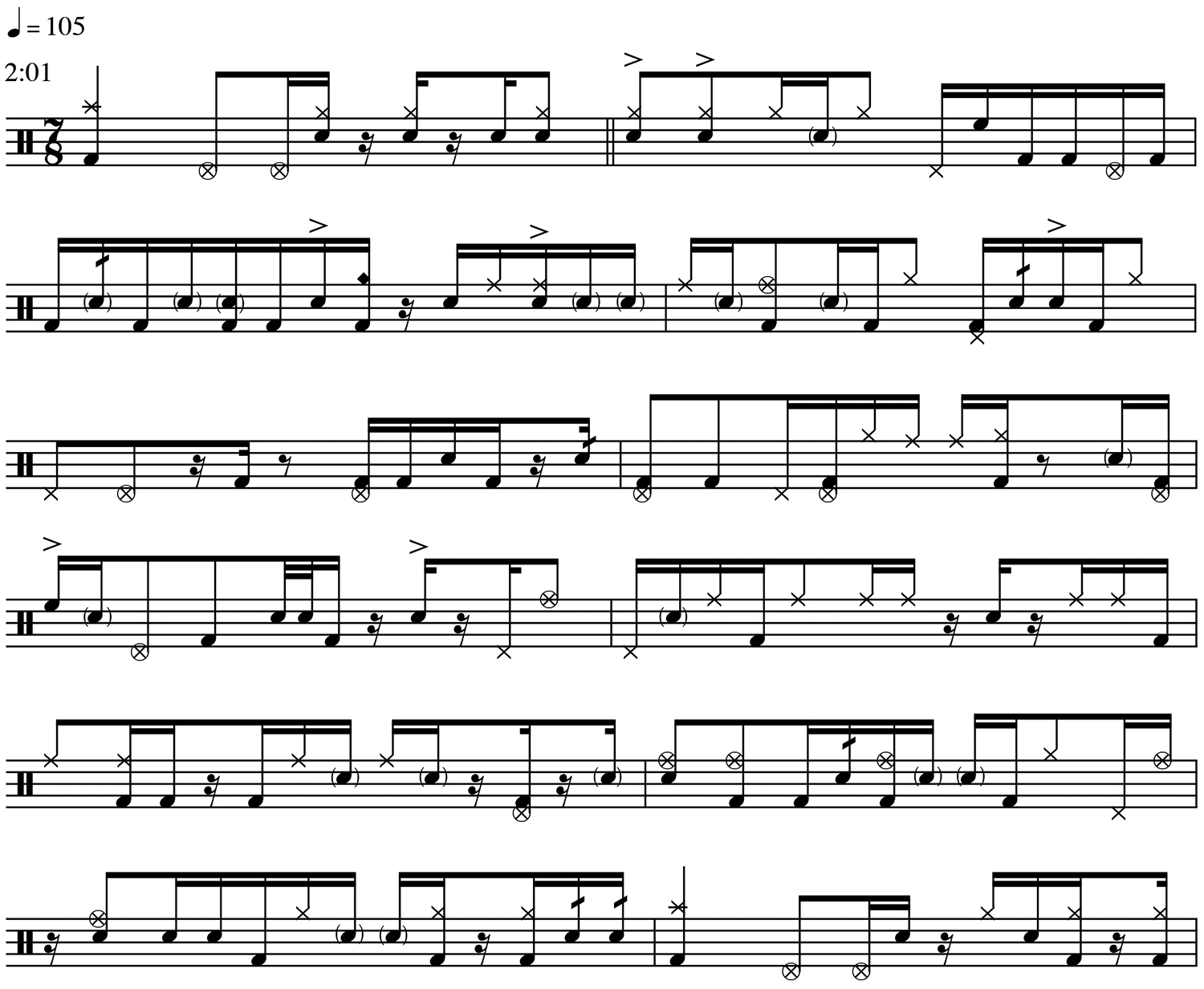From The May 2017 Issue Of DRUM! Magazine | Text And Transcription By Andy Ziker | Video Lesson By Nate Brown | Photograph: Caterina di Perri /ECM Records
The music on Lathe Of Heaven, tenor saxophonist Mark Turner’s 2014 release via ECM (the highly respected jazz label known for recording drums with unbelievable clarity), abstains from involving a chordal instrument such as piano or guitar. This increases the responsibilities for each member of the quartet, and is the ideal backdrop to showcase Marcus Gilmore’s unbelievable talent.
“Year Of The Rabbit”

Gilmore plays a beautifully crafted 5/4 jazz mambo over a bass ostinato. Ride, rim-click, hi-hat splashes, snare, and high tom simulate the sound of an entire Afro-Cuban percussion section (never an easy task), while additional ear candy is created with the use of space, a four-stroke ruff in measure four, rimshots in measures five and seven, and a double-time lick in measure six. Gilmore magically holds down the groove while never playing the same idea twice.
“Lathe Of Heaven”

It’s difficult to decipher the time signature of this excerpt from “Lathe Of Heaven,” until 7/8 time comes into focus one measure before the sax solo (2:01). Uneven, over-the-bar phrasing by both bass and drums leaves us in the dark until a clearly defined downbeat (a crash) in measure 12. Within the eighth-sixteenth songo-like flow, notice how Gilmore balances bass-drum heavy syncopation with a number of high frequency timbres: ride, ride bell, open and closed hi-hat, and hi-hat splashes.
“Sonnet For Stevie”

Mark Turner’s ode to Stevie Wonder and his feelings about the blues, “Sonnet For Stevie” shows Gilmore’s penchant to swing with broken time (leaving space within the triplet flow) and four-limb independence. He also shows complete command of the tables of time as he effortlessly moves from swung eighths in measure three to sixteenth accents at the beginning of measure four, and then uses quarters, swung eighths, sextuplets, and quintuplets all within one bar (measure six).

